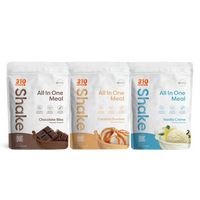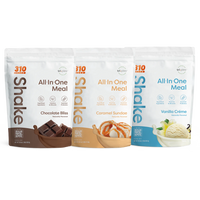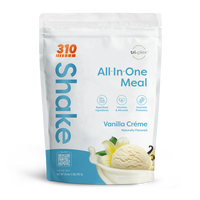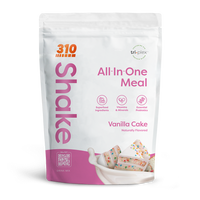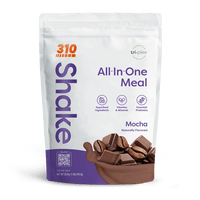It’s fair to say that many of us have a “love-hate relationship” with the weight loss scale. Though we love the guidance and direction if frequently offers, we also hate the control it can wield. After all, if after a daily weigh-in the numbers tip in your favor, you feel fantastic; But, if they don’t, you’ll likely feel defeated, and wonder what you did wrong. This is the overarching trouble with the scale… sometimes it doesn’t accurately reflect your hard work or progress.
The truth is that while there is value in knowing your weight on a regular basis, the actual number in pounds is often not the best indicator of overall health. For instance, a 165-pound woman who is 5’5″, a weightlifter, and has 19% body fat is very different from a 150-pound woman who is 5’10”, relatively sedentary, and has 35% body fat. These women see similar numbers on the scale, and yet their overall health and goals are vastly different.
For this reason, many fitness professionals believe in tracking weight loss in ways that don’t rely solely on weight in numbers. While it’s important to know where your body is as you work daily to maintain and/or alter it, there’s no need to chain all your hopes and wishes to a scale.
In this article, we’ll discuss five ways to track weight loss without a scale, by focusing on other factors that may more significantly impact your health.
How to Measure Weight Without a Scale 101
Are you curious to know how to tell if you’ve lost weight without a scale? We’ve got you covered! Read on…
1) Strength & Endurance
Physical endurance is officially defined as “the time span between the beginning of a physical activity and termination because of exhaustion.” In other words, it’s how much physical activity you can take and for how long. Strength is simply a measure of how useful your body weight is in exerting power on something else.
Ditch-the-Scale Details
You’ve been working out, toning up, and getting stronger. So of course, the scale would reflect that, right? Not necessarily. Volume of muscle is actually more dense than volume of fat, which can ultimately reflect a higher number on the scale. However, muscle actually burns fat. So while you build muscle, you may see numbers stay the same or even bump up a bit on the scale. But rest assured, that sturdy muscle is incinerating fat in your body and lowering your body fat percentage, which is great news for your overall health.
Maybe you’re able to blaze through a strength training workout in 35 minutes that used to take you 60. Or, maybe you’re able to run a mile in seven minutes when you started at twelve. These are indicators of improved overall and enhanced cardiac health, regardless of weight.
2) Body Fat Percentage

Next, body fat percentage (BFP) is classically defined as “the total mass of fat divided by total body mass.” In layman’s terms, BFP is the amount of body fat you carry, including both essential body fat (explanatory) and storage body fat (extraneous). Even more simply, BFP is the percentage of your body composition not comprised of water, muscle, bone, and vital organs.
Ditch-the-Scale Details
In the scheme of things, BFP is a much better indicator of actual health than your weight. As mentioned above, a 5’10” inactive woman versus our 5’5″ fitness buff speaks volumes. The bottom line is that scales can confuse by highlighting pounds dropped; BFP tells the whole truth by emphasizing useless “storage” body fat loss.
It’s nearly impossible not to notice BFP loss visually. An immediate result of losing body fat is a leaner appearance. Combining fat loss efforts with strength training results in the enhanced prominence of your muscular build. While you can measure your own body fat at home, another recommended option is to be measured by a professional. Checking in with your doctor, a nutritionist, or even a fitness trainer at your local gym occasionally to measure your progress is a great way to track weight loss.
3) Personal Measurements

Your measurements are also a fantastic indicator of weight loss. While this is one of the oldest used methods, it’s also one of the most reliable, particularly considering that most people see inch loss before weight loss even occurs.
Ditch-the-Scale Details
Measurements, much like BFP, tell the true story about what’s happening in your body. While poundage can include the weight of water and muscle, your measurements speak the truth about what’s happening to your body. Because muscle burns fat and offers a leaner appearance, your measurements will reflect that leaning out. Measure your waist, thighs, and chest area weekly to review your weight loss progress. Arguably, greater satisfaction lies in the journey from “45-35-50” to “38-30-45” than the loss of 20 pounds.
4) How Your Clothes Fit
This one speaks for itself. Clothes tell all kinds of stories, and we often define our weight by what we’re able to wear.
Ditch-the-Scale Details
Getting into an old dress or old jeans can do more for you than knowing how much you weigh. It is often a visual reminder of your “why”, and a tangible payout for your hard work. For many, the initiative to develop a healthier lifestyle begins with the intention of wearing something that doesn’t yet fit! We all recognize the incredible confidence that comes from clothing… Your wardrobe options, old and new, are often incredible measurements of your progress, and signs of fat loss that pay off every day.
5) Range of Motion & Flexibility
The ability to contort into new positions, both for fitness purposes and in life, is an added benefit of weight loss. It can also be a measurement of success in weight loss efforts.
Ditch-the-Scale Details
For the yogis, the benefit of increased range of motion is immediate. “Curvy yogis” like IG user @yogawithdavina have spoken of the benefits of weight loss on yoga practice. In fact, less weight on the joints is a fitness benefit across the board. Strength training using body weight alone becomes easier both because of enhanced strength and the fact that there’s less body weight to lift.
To sum it up, relying too heavily on the scale can be both mentally and physically exhausting, and can drain your motivation. That doesn’t mean you shouldn’t do it, it just means you should put things in perspective and look at all your measures of success, not just the scale. It’s important to know where you stand, but just as important to recognize there are more affirming, positive ways to track changes in your body than stepping on a scale.
Want more insight to help you eat clean and live a healthy lifestyle? Check out additional nutritionist-approved health articles and recipes on the 310 Blog.



